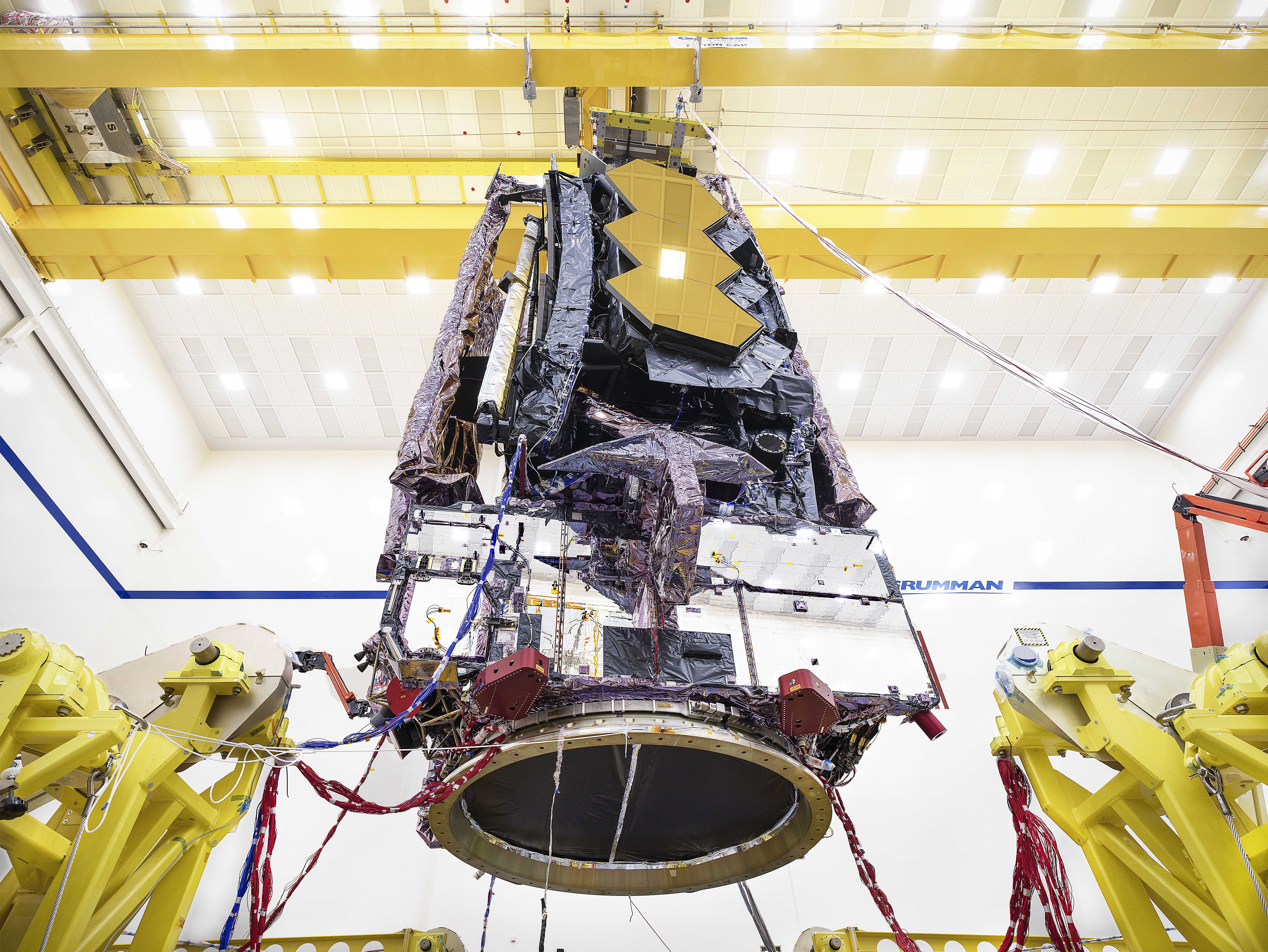
NASA's next big space telescope just took another step toward its highly anticipated 2021 launch.
The $9.8 billion James Webb Space Telescope has passed "environmental testing," a series of trials designed to simulate the considerable rigors of launch, NASA officials announced today (Oct. 6).
"The successful completion of our observatory environmental tests represent[s] a monumental milestone in the march to launch," Webb project manager Bill Ochs, of NASA's Goddard Space Flight Center in Greenbelt, Maryland, said today in a statement. "Environmental testing demonstrates Webb’s ability to survive the rocket ride to space, which is the most violent portion of its trip to orbit approximately a million miles from Earth."
Related: Building the James Webb Space Telescope (photos)
The tests took place at the Southern California facilities of aerospace company Northrop Grumman, which is building Webb for NASA. Technicians exposed the fully assembled observatory to acoustic extremes in a special chamber, blasting Webb with sound that topped 140 decibels. (For comparison, the average jackhammer generates about 110 decibels.)
Webb was then placed on a special shake table, which rattled the telescope with low-frequency vibrations comparable to the ones it will feel during its upcoming launch. That liftoff is scheduled to occur on Oct. 31, 2021, atop an Ariane V rocket from Europe's Spaceport in Kourou, French Guiana.
"Through the team’s dedication, hard work, and just pure excitement in being a part of this complex test, it was a complete success!" Webb mechanical systems structures engineer lead Sandra Irish, also of NASA Goddard, said in the same statement. "I have known these individuals for many years, and it’s been an honor to work with each one of them."
Get the Space.com Newsletter
Breaking space news, the latest updates on rocket launches, skywatching events and more!
Webb isn't quite ready to ship to South America, however. It still has to endure a few more tests, including a full systems evaluation, NASA officials said.
After liftoff, the massive observatory will make its way to the Earth-sun Lagrange Point 2, a gravitationally stable point 930,000 miles (1.5 million kilometers) from our planet. Webb will then deploy its tennis-court-sized sunshield and begin studying the cosmos in infrared light using a mirror that's 21.3 feet (6.5 m) across — nearly three times wider than the primary mirror on the Hubble Space Telescope.
Astronomers will use Webb for a variety of tasks, NASA officials have said, from scanning the atmospheres of nearby alien planets for possible signs of life to studying the first stars and galaxies to emerge in our universe.
Mike Wall is the author of "Out There" (Grand Central Publishing, 2018; illustrated by Karl Tate), a book about the search for alien life. Follow him on Twitter @michaeldwall. Follow us on Twitter @Spacedotcom or Facebook.
Join our Space Forums to keep talking space on the latest missions, night sky and more! And if you have a news tip, correction or comment, let us know at: community@space.com.

Michael Wall is a Senior Space Writer with Space.com and joined the team in 2010. He primarily covers exoplanets, spaceflight and military space, but has been known to dabble in the space art beat. His book about the search for alien life, "Out There," was published on Nov. 13, 2018. Before becoming a science writer, Michael worked as a herpetologist and wildlife biologist. He has a Ph.D. in evolutionary biology from the University of Sydney, Australia, a bachelor's degree from the University of Arizona, and a graduate certificate in science writing from the University of California, Santa Cruz. To find out what his latest project is, you can follow Michael on Twitter.
-
TahoeEd1 Reply
Great news. But Space.com headline says Oct 2031, please fix.Admin said:NASA's $9.8 billion James Webb Space Telescope has passed "environmental testing," a series of trials designed to simulate the considerable rigors of launch, agency officials announced today (Oct. 6).
NASA's James Webb Space Telescope passes crucial launch-simulation tests : Read more -
mr.mac52 A decade typo in the tag line, I hope that is.Reply
The $9.8 billion observatory is scheduled to launch in October 2031.
mr.mac52









